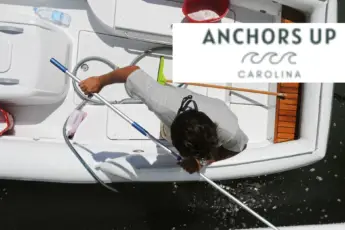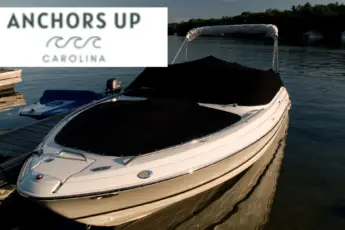Boat ownership requires dedication and deep pockets. Vessels are subject to environmental impacts, including UV rays, wind, rain, and salt spray in coastal regions. The combination of naturally occurring conditions causes wear and tear on vessels without leaving the dock, trailer, or dry rack. As if the surface conditions are not enough, watercraft stored dockside in saltwater face additional environmental impacts. Bottom painting is essential to avoid long-term issues in North Carolina, South Carolina, and Georgia. Read what you need to know about boat bottom painting and boat bottom painting service near me.
What Is Boat Bottom Paint
Boat bottom paint is also called antifouling paint. The antifouling covering is spread on the hull from the keel to inches above the waterline.
Boat bottom paint reduces the growth of barnacles, weeds, and other organisms that live in salt and brackish water.
During the summer months, untreated hulls quickly become inundated with growth. Copper is a key ingredient of bottom paint to aid in the reduction of hull accumulation from foreign objects.
How Often Should A Boat Bottom Be Painted
On average, boat bottom paint lasts for one year. After one year, haul the boat out of the water, power wash, and paint the hull.
While the boat sits dockside, maintenance is required despite a fresh coat of bottom paint. While paint slows the growth of barnacles and other sea life, it does not eliminate growth. Divers must be scheduled on a routine basis to scrape the hull clean. Without periodic cleanings, the watercraft will operate sluggishly and burn exceptional amounts of fuel.
What Is The Cost Of Bottom Painting A Boat
The cost to hire a professional bottom painter varies significantly. On average, the price ranges between twenty and thirty dollars per linear foot. Expect to pay more than $700 when hiring a professional to paint a boat’s hull measuring twenty feet in length. Lastly, ensure the service yard is applying top-quality paints such as Interlux.
Let’s face it, bottom paint is expensive. Compound the cost year after year, and in the end, it is a significant sum of money but preserves hull to help prevent long-term issues.
Why Is Bottom Paint Bad
The primary purpose of bottom paint is to inhibit growth from accumulating on the hull. Chemicals within the coating are harmful to seaborn organisms and plant life because they prohibit development.
Equally as affected are humans when in close contact. While it is best to avoid applying bottom paint altogether because of skin contact and fumes, a minimum, wear gloves and paint suites to prevent exposure to copper, biocides, and algaecides.
Why Should You Hire A Professional To Paint The Bottom Of A Boat
Hiring a professional boat bottom painter is advisable for a multitude of reasons.
Confined Space
The first is the need to crawl beneath a boat that is supported on blocks. Bottom painting conditions are less than ideal, particularly when you are prone to neck and back pain.
Chemicals
As we mentioned before, bottom paint contains nasty chemicals that present dangers to the applicant. Paint suits, masks, and gloves are necessary to prevent the absorption of paint and fumes into the skin and lungs.
Supplies
A multitude of supplies is required between preparation and painting. Rather than forgetting a necessary item halfway through the project, utilize a professional. Professionals factor supplies into the cost.
How To Find A Boat Bottom Painting Service Near Me
Locating a boat bottom painting service near me is a simple task using electronic devices or word of mouth.
To find a bottom painter, search boat bottom painting service near me on a computer, tablet, or phone. A full list of painters will display on the screen. Remember to read reviews and call to determine the best possible cost.
A second option is to ask fellow boaters and marina staff. More times than not, word of mouth is the best possible resource for finding high-quality work.
Are You Ready To Find A Boat Bottom Painting Service Near Me
If you live in the coastal regions of North Carolina, South Carolina, and Georgia, it is imperative to have the boat’s hull painted when storing the watercraft dockside. Without paint, sea life rapidly accumulates, resulting in poor performance with increased fuel costs. Despite the fees, annual maintenance will keep your vessel in tip-top shape.







